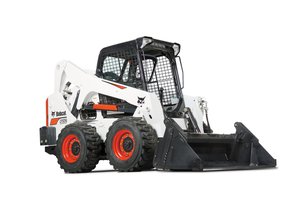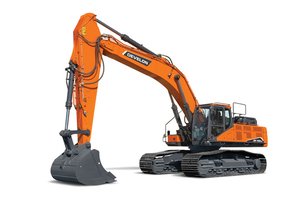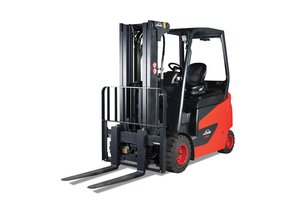Which is the right grinder for your application- Horizontal or Tub grinder? (+ Electric Grinder Tips)
April 1, 2022
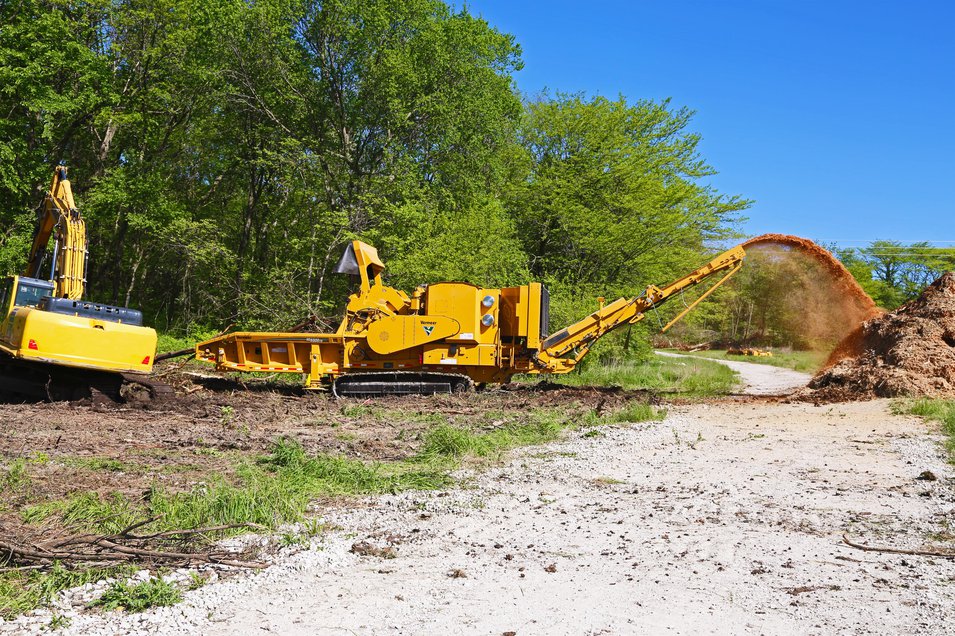
How to choose between Horizontal Grinder and Tub Grinder? (+ Electric Grinder Selection Tips)
Grinders are a popular choice of equipment for the material reduction jobs, thanks to their versatility and ability to process a wide variety of material including debris, logs, barks, construction and demolition (C&D) materials, and green waste. They often produce valuable finished product after grinding the big-sized material that is fed into them. Selecting the right grinder can help you tackle incoming materials in an efficient manner across various applications including land clearing and preparation, tree removal, green waste recycling, bio-fuel generation, and wood mulching.
There are various important factors to consider while selecting the grinder for your operations. Right from what kind of material goes inside, jobsite conditions, to what your are expectation from the after-product, are all important consideration. The most common dilemma faced by anyone who is in the market to buy a new grinder is to decide between Tub grinders and Horizontal grinders.
In this article, we will evaluate various parameters that will help you choose the right type of grinder for your needs. We will also talk about the benefits of electric grinders and how to know if they are a good fit for you.
How Tub grinder and Horizontal Grinder Work?
The fundamental difference between the working of a horizontal and a tub grinder lies in the way their hammermill is fed. In a tub grinder, the material is entered from a spinning, conical top-feed tub and it relies on the force of gravity to feed the hammer mill. The horizontal grinder, on the other hands, uses a chain-based feed roller and "moving floor" to feed the hammermill.
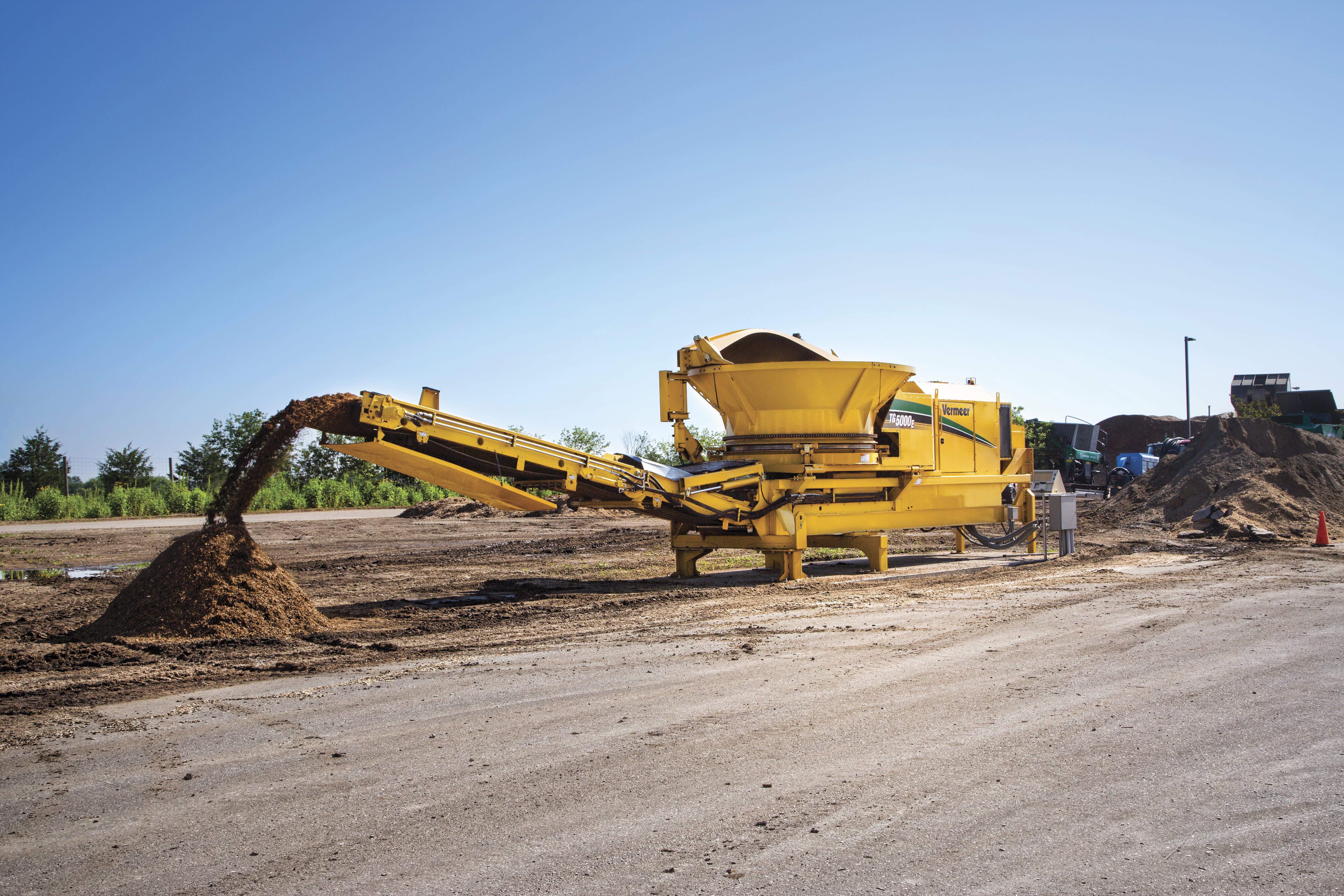
Tub Grinder
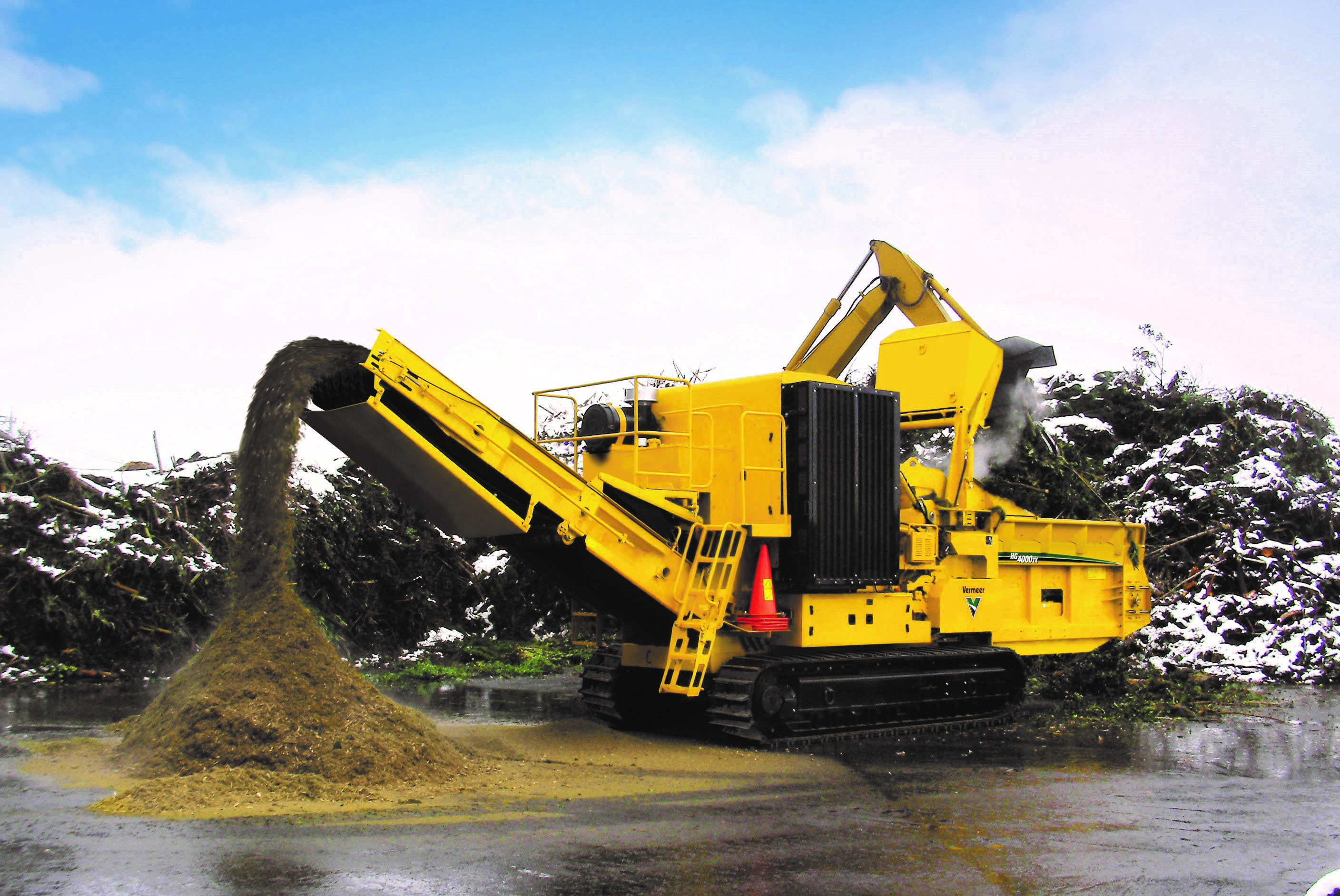
Horizontal Grinder
Both, Horizontal and tub grinders, offer unique advantages. Once you answer following questions to define your needs, you can compare both type of grinders to find the right fit:
- What material will be processed by the grinder? (tree branches, pallets, C&D etc.)
- Do you require a specific-sized end-product?
- Do you have limited space availability at your jobsites?
- Does your incoming material contain contaminants like metal pieces?
- How will you handle repair and maintenance of the equipment?
- Does your operation require the ability to move your grinder around the jobsite?
If you have answers to the above questions, you can refer to the guide below to determine which type of grinder is most suited for you. One of our equipment specialists can help you select the right type and model for your operational needs.
Comparing Horizontal Grinder vs Tub Grinder
1.Type and Size of Incoming Material
- Long materials
Horizontal grinders deliver a superior performance if the input consists of longer materials like branches and tree trunks. Unlike a tub grinder which may require you to cut the lengthy materials in to smaller parts, horizontal grinder can directly be fed with such loads.
- Bulky and odd sized-materials
Tub grinders tend to perform better if you are dealing with bulkier materials like stumps, pallets, and root balls. The large tub infeed opening makes it easier to get the bulkier materials down to the hammermill as compared to horizontal grinders which have a narrower opening.
- Green waste
Both types of grinders do a good job when dealing with green waste. That said, other factors like safety considerations needs to be taken in to account before deciding.
2.Space availability and Jobsite Safety Considerations
Tub grinders can hurl out material and need more space to operate
Tub grinders can throw out materials to long distances and at considerable speed while in operation. When the material quantity gets low and the hammer mill gets exposed, it can start ejecting material out of the tub. For this reason, tub grinder needs a lot more room to operate, especially when the incoming material has contaminants like metal pieces. A tub grinder can work if your grinding operation is in a distant, controlled area where bystanders are kept at least 500 feet away.
Operators need to ensure that the tub is packed with material so that the hammer mill is always covered, and material doesn’t get hurled out. Features like the patented thrown object restrain system (TORS) found on Vermeer models, can help reduce the quantity and distance of thrown objects.
Horizontal grinders are safer and preferred in crowded areas
Due to the horizontal and more controlled feed, the hammer mill in horizontal grinders doesn’t get exposed to the material in the same way as the tub grinders. This mechanism stops the material from getting thrown to long distances and the hazard zone can often be restricted to forward and slightly outward areas from the feed opening. That said, horizontal grinders can also pose a safety hazard and should only be operated by fully trained personnel following safety protocols.
Horizontal grinders are an obvious choice if you are going to work on a space constrained and a crowded jobsite.
Ensuring safety of people and equipment while working with contaminated feed
A lot of progress has been made in the grinding equipment technology which allows for separation of metal contaminants before the material hits the hammer mill. Vermeer offers a Damage Defense system which can go a long way in reducing the possibility of damage if the mill encounters metal while grinding. Compatible with Vermeer tub grinder as well as Vermeer horizontal grinder, the Damage Defense system will alert the grinder control and automatically initiate the shutdown process. The system will reduce the likelihood of metal being pulled into the mill by reversing the feed system immediately, helping prevent significant damage to the grinder as well as improve jobsite safety.
You can see the Vermeer Damage Defense System in action below. Speak with one of our people to learn more about our grinder models and how they can make you jobsite efficient and safe.
3.Maneuverability
Horizontal grinders with tracks are easier to move around
If you need to move around the grinder at the jobsite, then you may be better off getting a horizontal grinder. Horizontal grinders, like the Vermeer HG6000TX and the HG800TX, come equipped with tracks which make them a great option if you need to reposition the grinder frequently. Most tub grinder models do not have an option of tracks so it might be challenging to use them in applications, like land clearing, where you need the grinder to be maneuverable. On the other hand, tub grinders can be a good option for stationary grinding sites if it meets your other needs as well.
4.Control Over Finished Product
Horizontal grinders offer superior particle size control
As important as the incoming product is to define your equipment needs, understanding the end use of the finished material also helps. Horizontal grinder models come with more sophisticated controls which allows them to size the output material more consistently. Also, horizontal grinders can help you achieve smaller particle size which may be a more desirable output specially for landscape mulch and animal bedding.
5.Maintenance
Simplistic design of the tub grinders makes it easier to perform certain maintenance procedures on them. Horizontal grinders, which employ a more sophisticated infeed mechanism, require a more professional approach while performing maintenance. Our experts recommend relying on certified technicians to undertake maintenance of both types of grinders to ensure higher performance, longevity, and personnel safety.
Both horizontal and tub grinders have unique features. Matching your needs against the benefits offered by each type of machine can help you select the machine that will help you maximize productivity and safety. In the recent years, the market seems to be moving towards increased adoption of horizontal grinders for factors like safety, mobility, and more control. If you are looking to replace or upgrade your tub grinder, it is worth exploring horizontal grinders available in the market and see what works the best for your operations.
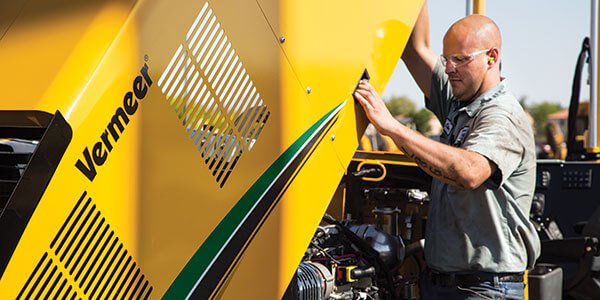
Electric Grinders Benefits
Many stationary grinding operations are turning to electric-powered machines to manage cost of operation. Both tub grinders and electric grinders have electric models available in the market.
Electric Advantage
- Electric-powered equipment eliminates the need for common maintenance costs associated with diesel engines, such as oil and filter replacements
- Since electricity is cheaper than diesel or gas, the operating costs associated with electric horizontal grinders can be significantly lower
- In comparison to diesel machines, the noise level on electric powered equipment is significantly creased, and they do not produce as much heat or emissions leading to improved work environment
- Electric motors can be more reliable and require less frequent maintenance intervals
How do you know if Electric Grinder is right for you?
Before you start evaluating the electric options, use the following checklist to make sure that it would work for you operations.
- Access to power source : Being powerful machines, electric grinders cannot work-off of a battery. They need a plug-in power source at the jobsite. If you currently do not have access to a 3-phase electric supply at the jobsite, then an electric grinder might not be the right option. That said, if it is possible for you to make electricity available at the jobsite, it might be worth the upgrade. In the long-run, savings offered by electric grinder would not only offset the investment but also prove to be profitable.
- Material Flow at the site: If the material flow to the grinder is fixed, say from a picking line, then the electric option is a good choice for you. Portability is an advantage offered diesel grinders. Electric models may be difficult to move around since they need to be plugged-in to a power source.
- Working at multiple sites: While it is possible to transport an electric grinder from one site to the other, you must ensure that there is availability of power at all the locations. If you don’t need to move your equipment from site-to-site, especially to the ones that lack electrical infrastructure, you can work with an electric grinder.
Choosing the right equipment for your grinding needs is critical for your success. Whether to select a horizontal grinder or a tub grinder, an electric option, or a diesel one depends on a lot of factors that we discussed above. Speak with one of our equipment specialists who can help you find the best grinding solution for your needs.

